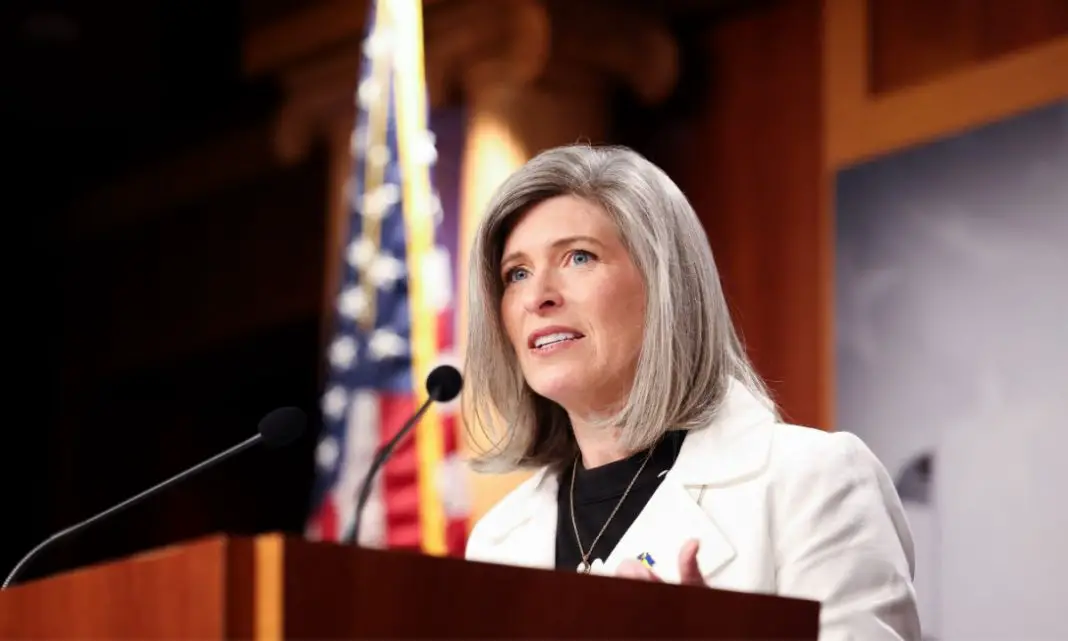Senator Joni Ernst, a no-nonsense fighter from the Hawkeye State, just dropped a bombshell bill that’s music to the ears of every taxpayer tired of Washington’s endless waste. On Thursday, she unveiled legislation that hands President Trump the keys to unload those dusty, forgotten federal buildings cluttering up the capital like relics from a bad dream.
While President Trump is dragging federal workers back to their desks after years of remote work excuses, these empty government hulks sit there mocking us. Ernst nailed it in her statement: “Despite President Trump calling federal employees back to work, vacant government buildings could easily be mistaken as future locations for Spirit Halloween stores.”
Ernst, who’s leading the charge as chair of the Senate DOGE Caucus— that’s the group laser-focused on slashing government fat— isn’t afraid to talk about who’s to blame.
“For too long, the entrenched bureaucracy has used red tape to prevent these ghost towns from being sold off,” she stated.
Enter the Disposal Act, Ernst’s sharp tool to cut through the nonsense. This isn’t some half-measure; it’s a full-throttle assault on inefficiency. The bill puts six prime chunks of D.C. dirt straight on the chopping block for quick sale, ripping away the stupid rules that have kept them locked up.
Think about the cash haul: Hundreds of millions flowing back into the treasury from these sales alone, with billions more saved long-term by ditching the upkeep on these money pits. It’s the kind of straight-shooter move that puts America First, turning dead weight into real relief for working families.
Ernst’s team dug deep, spotting this rot as early as 2023. Federal holdings have been rotting on the vine, underused and unloved, while bureaucrats pat themselves on the back for “essential” work from home. Per Fox News Digital, her plan targets the heart of the beast—right in Washington, D.C., where the swamp runs deepest.
First up: The Frances Perkins Federal Building, currently squatting under the Department of Labor. Next in line, the James V. Forrestal Building, home base for the Department of Energy.
Don’t forget the Theodore Roosevelt Federal Building, where the Office of Personnel Management lurks. Then there’s the Robert C. Weaver Federal Building, former digs for Housing and Urban Development. HUD announced last June they’re packing up anyway, so why cling to this albatross? Ernst’s legislation turns it into opportunity, not obligation
The Department of Agriculture’s South Building rounds out the list—headquarters for the ag folks who should know better than to let prime real estate sit idle. Farmers across the heartland are scraping by, and here we are funding empty offices? No more.
Finally, the Hubert H. Humphrey Federal Building, nerve center for Health and Human Services. With HHS’s endless spending sprees on everything but results, offloading this could fund actual health wins for everyday Americans, not more mandates.
The numbers hit like a freight train. Ernst’s office tallies about 7,700 fully vacant federal buildings nationwide, plus another 2,265 that are barely occupied—ghost ships in a sea of squandered dollars.
Back in 2023, the Office of Management and Budget crunched the figures: Underutilized properties bleed $81.346 million every single year. That’s your tax money, folks, flushed down the D.C. drain on lights left on in empty rooms.
Fast-forward to 2025, and the General Services Administration drops an even uglier truth bomb: Deferred repairs and maintenance on these federal flops already top $6 billion. Give it five years, and that tab could balloon past $20 billion. It’s fiscal insanity, plain and simple.
Ernst isn’t just talking; she’s delivering for the forgotten men and women who’ve had enough of elite waste. Her bill is a rallying cry: Sell the skeletons, save the nation, and build a leaner, meaner government that serves us, not itself.
Do you support this proposed bill to sell federal buildings that are hardly being used? As always, comment with your thoughts down below!


Yes! Sell…
Well done. Rid of them all. If they don’t sell tear them down.
Dump them now!
Yes, put money toward the National Debt!